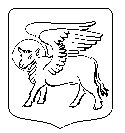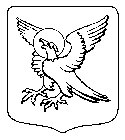
Saint Dominic
contemplating the Scriptures
Comments have been prepared by Chris Haslam using reputable commentaries, and checked for accuracy by the Venerable Alan T Perry. While not intended to be exhaustive, they are an aid to reading the Scriptures with greater understanding.
Comments are best read with the lessons.
Feedback to
is always
welcome.
Lessons for this week from the Vanderbilt University web site
PDF files for use with Acrobat Reader:
Get Adobe Acrobat Reader
Adobe Acrobat Reader
Isaiah
This book can be divided into two (and possibly three) parts. Chapters 1 to 39 were written before the exile, from about 740 BC to about 700 BC. These were difficult times for the southern kingdom, Judah: a disastrous war was fought with Syria; the Assyrians conquered Israel, the northern kingdom, in 723 BC, and threatened Judah. Isaiah saw the cause of these events as social injustice, which he condemned, and against which he fought valiantly. Chapters 40 to 66 were written during and after the Exile in Babylon. They are filled with a message of trust and confident hope that God will soon end the Exile. Some scholars consider that Chapters 56 to 66 form a third part of the book, written after the return to the Promised Land. These chapters speak of hope and despair; they berate the people for their sin, for worshipping other gods. Like Second Isaiah, this part speaks of the hope that God will soon restore Jerusalem to its former glory and make a new home for all peoples.
Isaiah 61:1-4,8-11
This passage was probably written after the people of Israel returned from Exile. It foretells the total salvation of God’s people: bodily, spiritually, individually and socially. The prophet says that God has empowered him to act on God’s behalf; God has “anointed” him, commissioned him to preach and to hear the Word of faith, to understand God’s word, and to be strengthened in following it. (Vv. 1b-2 are Jesus’ text when he preaches the good news in the synagogue in Nazareth: see Luke 4:18-19.) This is a message of rescue for God’s people, in all ways. “The year of the Lord’s favour” (v. 2) is mentioned in Leviticus 25:10: in a jubilee year, a year dedicated to God, one of liberty, all shall return home to their families. It is a year of rest in which the land produces without being sown. (The word translated as “vengeance” can be rendered as rescue.) In 60:21, God promises the people righteousness, oneness with God. Calling them “oaks of righteousness” here (v. 3) indicates the strength of their bond with him. They will show God’s majesty and power (“glory”), as intermediaries (“priests”, v. 6) between him and other nations.
Vv. 4-7 tell us that strangers, foreigners, from all nations will contribute to the restoration of righteousness on earth. They will be greatly (“double”) blessed, and have eternal joy. The promises to Abraham made in Haran are finally to be fulfilled (v. 9). “They” (probably Israel, but possibly the foreigners too) will be rewarded (“recompense”, v. 8); God’s agreement with them will last for ever. In vv. 10-11, the prophet speaks as the renewed Jerusalem. All will rejoice because God has provided salvation and has healed their rift with God. Just as seeds grow into plants that can be seen, so God will cause people to be joined with him, to grow in him, and to praise him as an example for “all the nations”.
Psalms
Psalms is a collection of collections. The psalms were written over many centuries, stretching from the days of Solomon's temple (about 950 BC) to after the Exile (about 350 BC.) Psalms are of five types: hymns of praise, laments, thanksgiving psalms, royal psalms, and wisdom psalms. Within the book, there are five "books"; there is a doxology ("Blessed be ... Amen and Amen") at the end of each book.
Psalm 126
This is a liturgical song, part of public worship. V. 1a can be rendered as When the Lord brought back those who returned to Zion . When the people first returned from exile in Babylon, they hardly believed their good fortune (“like those who dream”). So great was their success that other nations (v. 2) recognized God’s mighty works on Israel’s behalf, and the people of Israel “rejoiced” (v. 3). But after the initial euphoria, life is difficult. Please, God, “restore our fortunes” (v. 4), as the land around a normally dry river in the desert (“Negeb”) blooms when the water flows. May we, who are sorrowful as we sow, gather the harvest in joyfulness – as God once more acts on our behalf.

Three gospels in the New Testament offer similar portraits of the life of Jesus; Luke is the third of them. Its author, traditionally Luke the physician who accompanied Paul on some of his missionary journeys, draws on three sources: Mark (via Matthew), a collection of sayings (known as Q for Quelle, German for source) and his own source. It is a gospel that emphasizes God's love for the poor, the disadvantaged, minorities, outcasts, sinners and lepers. Women play a more prominent part than in the other gospels. Luke never uses Semitic words; this is one argument for thinking that he wrote primarily for Gentiles.
Luke 1:47-55
This poem is known as the Magnficat, from the first word of the Latin translation. Mary is visiting Elizabeth and Zechariah. God’s messenger, Gabriel, has told her that she will bear Jesus, “Son of God” (v. 35), successor to David and founder of an eternal kingdom. Now she thanks God. Speaking today, she might begin: I, from the depth of my heart, declare the Lord’s greatness and rejoice in God my Saviour. In Vv. 48-50 she praises God and says how much she depends on God’s mercy; vv. 51-53 speak of the great reversals God has, and will, achieve through all ages; vv. 54-55 recall that he has fulfilled, and continues to fulfill, his promises to the patriarchs. In choosing Mary, God goes against conventional wisdom: he chooses the poor and lowly over the “proud” (v. 51) and “powerful” (v. 52).
1 Thessalonians
This letter is perhaps the oldest book in the New Testament. Paul (with Silvanus and Timothy) founded the church there during his second missionary journey, and as is recorded in Acts 17, was forced to leave the city due to persecution. Many Greeks who already worshipped God, many pagans and "important women" became Christians. The letter was written from Athens to strengthen the new Christians in their faith.
1 Thessalonians 5:16-24
Paul is drawing toward the conclusion of his letter. He has just exhorted the Thessalonian Christians regarding their personal conduct and their relations within the community. Now he turns to spiritual matters. God’s plan for them, realized in Christ, is to “rejoice always”, to make their lives a continual prayer, a working in unison with God, and to be thankful to God for his freely-given gifts, whatever may happen to them (vv. 16-18).
Do not, he says in v. 19, suppress manifestations of the Holy Spirit as he works through members of the community; do not despise “the words of prophets” (v. 20), i.e. preaching inspired by God, words of consolation and warning spoken by members who receive messages from God, and predictions of future events, but be aware that there are true and false prophets; there are those who authentically speak God’s word, but others who do not, who are false, “evil” (v. 22). Take care to discern, in the context of the community, all supposed manifestations of the Spirit (“test everything”, v. 21).
Finally, in vv. 23-24, Paul prays that God, who brings peace (shalom) in the community now and promises eternal peace in his kingdom, may bring them into union with him (“sanctify”). Also, may every aspect of each one of them – their relationship to God (“spirit”), their personal vitality (“soul”), and their physical bodies – be (and be ready to be) found godly, worthy of the kingdom, when Christ comes again. God, who calls them to the Christian way, in his fidelity will sanctify them and make them worthy of the kingdom.

John is the fourth gospel. Its author makes no attempt to give a chronological account of the life of Jesus (which the other gospels do, to a degree), but rather "...these things are written so that you may come to believe that Jesus is the Messiah, the Son of God, and that through believing you may have life in his name." John includes what he calls signs, stories of miracles, to help in this process.
John 1:6-8,19-28
In the opening verses of the book, the evangelist has told us, that the Word, the logos, (i.e. what God says, God in action, creating, revealing and redeeming) existed before all time. He is the force behind all that exists; he causes physical and spiritual life to be; life, goodness, light, overcomes all evil. Jesus, the “light” (v. 7), took on being human through God, and is a force for goodness, light, godliness, for all people.
Now he tells of John the baptizer, who is sent, commissioned by God, to point to Jesus, to “testify to the light” (v. 7). He is the lamp that illuminates the way, but Christ is the light (v. 8). When the religious authorities (“Jews”, v. 19) send emissaries (“priests and Levites”) to assess the authenticity of this religious figure, John tells them that he is neither of those whom they are expecting to come to earth: neither “the Messiah” (v. 20) nor the returned “Elijah” (v. 21). (Jews believed that one or both would establish a kingdom on earth free from Roman domination.) Nor is he “the prophet” who was expected (by some) to be instrumental in establishing the Messiah’s kingdom. John says simply that he is the one who prepares “the way of the Lord” (v. 23), who announces the Messiah’s coming, fulfilling Isaiah 40:3. Representatives of the Pharisees (who enforced traditional Jewish law and practice) ask in v. 25: why are you performing an official rite without official status? (Jews baptized proselytes at the time.) John tells them that the one to whom he points is already on earth (v. 26); he is so great that I am not even worthy to be his slave. Surprisingly, per v. 28, this occurred outside Israel.
© 1996-2022 Chris Haslam